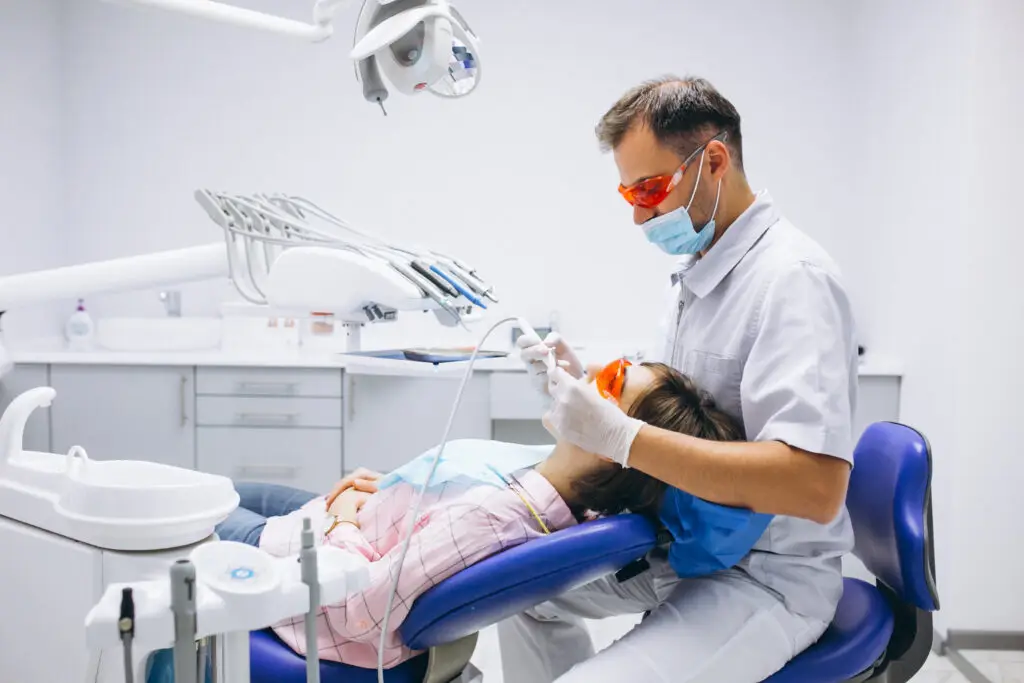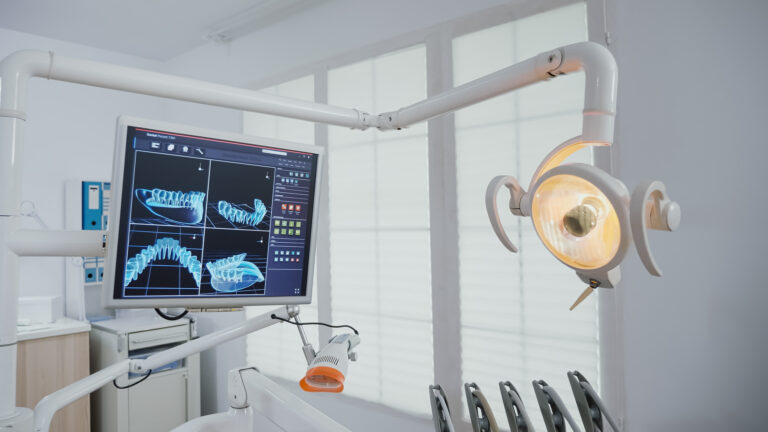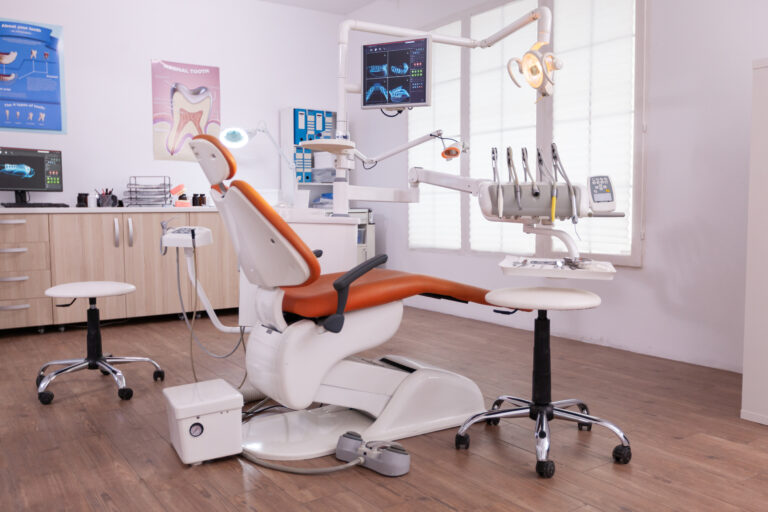Should You Buy Second-Hand Dental Tools & Equipment for Your Clinic? Cost vs Risk Explained
Table of Contents
Introduction
Setting up a dental clinic can be an expensive undertaking. From dental chairs to X-ray machines and sterilization units, equipping your clinic with the necessary tools can quickly run into several lakhs. This is why many practitioners, especially those launching a new clinic or expanding their existing one, consider buying **second-hand dental equipment**.
While buying used **dental tools**, **dental chairs**, and other equipment can significantly reduce upfront costs, it also introduces risks that may affect clinical outcomes, patient safety, and long-term value.
This blog dives into the **cost versus risk** equation to help you make an informed decision when considering used dental equipment.
Cost Benefits of Buying Second-Hand Dental Equipment
1. Significant Cost Savings
Used dental equipment is generally priced 30% to 50% lower than brand-new alternatives. This translates into large savings on big-ticket items like:
*Dental chairs (new: ₹2–12 lakh; used: ₹1‑6 lakh)
*X-ray machines and RVG units
*Sterilizers and autoclaves
*Scaling, endodontic, and surgical units
These savings allow clinics to allocate funds to:
* Clinic interiors
* Staff salaries
* Marketing and branding
* Diagnostic tools
2. Immediate Availability
Many second-hand units are available for purchase and installation immediately. This is crucial if:
* A critical piece of equipment fails suddenly
* You’re setting up a new location with time constraints
3. Lower Depreciation Risk
New dental equipment depreciates sharply in the first few years. By purchasing second-hand items, the initial depreciation is already absorbed by the original owner, allowing you to potentially resell without major loss.
4. Positive Environmental Impact
Buying refurbished or used equipment reduces landfill waste and manufacturing demand. This contributes to a more sustainable practice.
Risks and Challenges of Buying Used Dental Equipment
1. No or Limited Warranty
Used equipment usually comes with minimal or no manufacturer warranty. Some refurbished items may carry a short-term seller warranty, but many don’t. This means:
* Repairs are out-of-pocket
* Replacement parts may be hard to find
* Equipment failure may halt operations
2. Unknown Usage History
* Was the equipment well-maintained?
* Were parts replaced regularly?
* Has it been through major repairs or accidents?
These unknowns introduce the risk of unexpected breakdowns.
3. Outdated Technology
Many older models may:
* Lack digital integration (e.g., DICOM, Wi-Fi, USB)
* Be incompatible with modern software or workflows
* Offer lower image quality or slower processing
Using outdated machines can impact clinical efficiency, diagnostic quality, and patient satisfaction.
4. Hygiene and Sterilization Concerns
Dental tools and chairs involve direct patient contact. If improperly refurbished, they may harbor:
* Bacteria or viruses
* Rust or micro-damage
* Contamination risks
This can lead to infection control issues, legal liabilities, and loss of reputation.
5. Limited Compatibility and Upgrade Options
* Older units may not support new attachments or upgrades
* Integration with digital workflows may be impossible
* Customization is limited compared to new models
6. Risk of Counterfeit or Substandard Equipment
Especially when buying through:
* Online marketplaces like Alibaba, eBay, or unauthorized vendors
* Social media classifieds
This can result in purchasing:
* Non-ISO-certified tools
* Poorly refurbished machines
* Fake or mislabeled brands
Best Practices When Buying Used Dental Equipment
1. Buy from Reputable Dealers
* Choose certified medical equipment resellers
* Prefer companies that specialize in dental refurbishing
* Ask for client references or past sales history
2. Inspect or Test Equipment
* Visit the seller to inspect the equipment physically
* Check for:
* Operational soundness
* Structural damage
* Wear on upholstery, tubing, and connections
3. Check Warranty & After-Sales Support
* Some resellers offer a limited warranty (3–12 months)
* Ask about service contracts and spare parts availability
4. Review Refurbishment Documentation
* Ensure high-wear parts (e.g., suction lines, valves, motors) are replaced
* Verify cleaning, sterilization, and functionality testing records
5. Avoid Suspiciously Cheap Deals
* If the price is too good to be true, it probably is
* Counterfeit tools can be dangerous and lead to legal penalties
6. Consider Patient Perspective
* Patients often equate equipment quality with treatment quality
* Newer, quieter, and more modern-looking equipment builds trust
7. Budget for Repairs
* Even well-maintained used equipment may need:
* Replacement bulbs or batteries
* Software upgrades
* Calibration and certification
Include 10–15% of equipment value in a repair/reserve fund
Summary Table: Cost vs Risk Breakdown
Factor | New Equipment | Used Equipment |
Initial Cost | High | 30–50% lower |
Warranty | 1–5 years | None or limited |
Support & Maintenance | Included by the manufacturer | Often extra or unavailable |
Hygiene Assurance | Factory sterilized | Depends on the seller’s refurbishing process |
Technology | Latest features | May be outdated |
Resale Value | Lower (rapid depreciation) | Higher (already depreciated) |
Patient Perception | High confidence | Depends on the look & functionality |

Conclusion
Buying second-hand dental tools, dental chairs, and diagnostic units can save your clinic lakhs in setup costs.
But these savings come with potential risks to performance, hygiene, and patient safety.
By following strict inspection protocols and purchasing from reputable vendors, you can reduce these risks while benefiting from cost savings.
When it comes to core patient-care equipment like sterilizers and dental chairs, quality should never be compromised.
Consider using tools only when proper documentation, hygiene standards, and support are in place.
Ultimately, your choice should align with your clinic’s vision for care, growth, and reputation.
FAQs
**Q1: Is it safe to buy a second-hand dental chair?**
Yes, but only if it has been professionally refurbished and certified by a reputable dealer. Always inspect for structural integrity and hygiene.
**Q2: What dental tools are safe to buy used?**
Durable tools like scalers, handpieces, curing lights, and X-ray units can be safe if properly maintained. Avoid consumables or instruments with fine mechanisms.
**Q3: Where should I not buy used dental equipment?**
Avoid buying from unverified sellers on eBay, Alibaba, or social media groups. These platforms have limited buyer protection and may sell counterfeit goods.
**Q4: How do I check if used equipment is refurbished?**
Request documentation on the refurbishing process, parts replaced, and functionality tests. If no paperwork is available, it’s best to walk away.
**Q5: Should I buy new or used dental equipment for my first clinic?**
It depends on your budget and risk tolerance. A mix of new and refurbished equipment from trusted suppliers is a practical compromise.
Also Read
- Pradhan Mantri Jan Arogya Yojana : Great Opportunity for Small Healthcare Providers
Indian Healthcare Sector:-Want to know how Digital India Is Transforming Small Pharmacies?
Want Better Rates and Priority Supply? Pay Your Vendors Early — Here’s Why It Works
Running a Private Clinic? Here’s How to Track and Cut Monthly Costs





